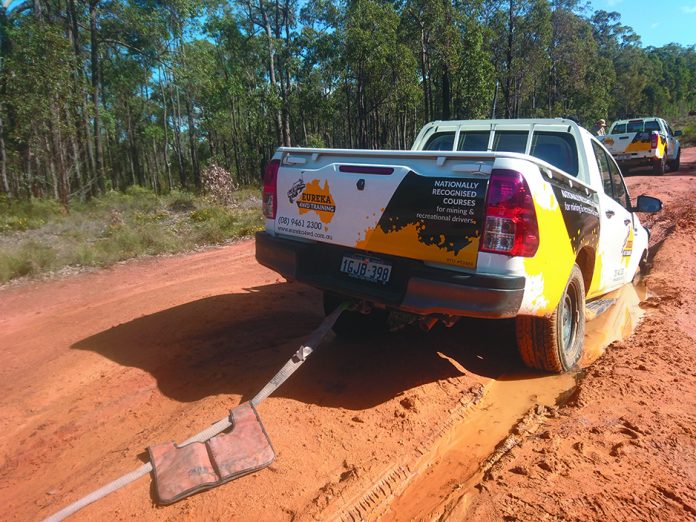4WD safety and training tips
A new 4WD owner will know their vehicle has all the latest technology for getting offroad. Traction control, electronic stability, AMS braking – these features have come standard on new 4WDs for the past couple of years.
An experienced 4WDriver knows that having these features on their vehicle isn’t enough when it comes to 4WD safety.
In the past 12 months, 22 people have been killed in Australia due to 4WD recovery went wrong. With statistics like this, it makes sense then that before you take your vehicle offroad, you get yourself a bit of training.
Mark Haffenden from Eureka 4WD Training believes if more people took the time to do a 4WD training course, there’d be less accidents both onroad and offroad. Mark has been a keen 4WDriver for decades and he knows how dangerous 4WDriving can be.
“Driving a 4WD is a lot more complex than people realise, you can’t slow down in a 4WD the way you can in other cars, you need to take corners differently, you need to really know what your vehicle is capable of before you get out on the road – and definitely before you go offroad,” Mark said.
“Obviously with experience comes skills and know-how, but if you’re just getting started, a 4WD training course will help you stay safe. A very big part of our training is making sure participants have a sound knowledge of how their 4WD works, as well as techniques and “dos and don’ts” when it comes to safety.”
4WD training courses cover the basic skills and equip drivers with the knowledge they would never even know they needed. Mark said it’s the simple things that a lot of people don’t think about that they learn in their training course.
“A big part of it is tyres – how to let tyres down, when to let them down and how much for the different terrain. Some people might not realise they need to let their tyres down every time they go offroad, whether on gravel, rocks or on sand.”
“Another important part of 4WD safety that you’ll learn is recovery techniques and the safe way to use equipment because unfortunately using equipment the wrong way is how people get injured or killed.”
“And it’s absolutely vital that before you go offroad, you get have rated, after market recovery points fitted onto your vehicle. If you don’t, and you need to perform a recovery, the force of the snatch strap will snap the tie down points on your vehicle,” Mark said.
Having the right gear is something many people will consider before they go offroad, but Mark has some simple advice for 4WDrivers. He says as long as you take three things with you, you can get out of any situation. Mark’s basic recovery equipment list is a shovel, a block of wood and an air compressor.
“You need the air compressor for your tyres and of course a shovel to dig your way out of the sand. But what a lot of people don’t think about is taking a simple block of wood.”
“If your vehicle is bogged in the sand, you need something to put the jack on, otherwise you’ll never get the lift you need. Put it on a block of wood,” he said.
“Of course there’s dozens of products on the market you can buy as well for recovery equipment, depending on your budget and how much you want to spend. The basic items you’d look at for a full recovery kit are max tracks, snatch straps and winches, which make life a lot easier than trying to dig your way out.”
So if you’re serious about 4WDriving, take the time to do a training course – and make sure you have all the essential recovery gear before you head offroad!
Heading offroad? Have you covered all the basics?
Vehicle set-up: Your 4WD needs to have good ground clearance (better than a standard road car), good offroad tyres including a spare (or two) and possibly upgraded suspension. You may also consider a long range fuel tank.
Consider where you’re going and learn to read the road: Dirt roads with their sharp stones and exposed tree roots can kill tyres; rough corrugations need to be approached slowly and cautiously; sand driving requires a whole skill-set of its own; and consider whether you will be taking on water crossings. Which is why a 4WD training course can be so valuable!
Recovery: Sometimes even the best off-road driver can’t avoid getting stuck. This is when you need recovery gear — and to know how to use it. Don’t head out without the basic recovery gear!
- Tyre pressure gauge
- Shovel
- Rated Recovery Points
- Snatch Strap
- Tyre compressor (12V)
- Rated bow shackles
- An understanding of tyre pressures and 4WDing
It’s also not a bad idea to be prepared with a puncture repair kit, comprehensive first-aid kit and communication gear such as a 5-Watt UHF radio and sat-phone.
If you think that yourself or a family member could do with a bit of 4WD training, Eureka 4WD Training in Midvale, Western Australia have a number of recreational 4WD courses to choose from. For more information head to eureka4wd.com.au. Ask for Frank and tell him Ash from Ready 4 Adventure sent you.



























